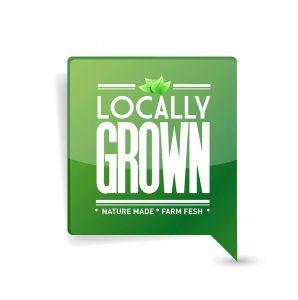
Learn how low income families are able to fill their plates with locally grown food (photo credit: BigStockPhoto.com)
In the war against obesity, those in the lower income brackets have been losing ground. Stuck between the proverbial rock and hard place, many low income Americans struggle to eat a healthy diet because they lack access to healthy options and resources to procure them. But thanks to a growing partnership between the USDA and farmers across the country, the tide in that battle may be turning.
The rocks for these low-income Americans are something called food deserts which are urban and even suburban areas where it is difficult to buy fresh, local food that is affordable. The hard place has traditionally been their inability to afford higher quality food options like fresh produce and lean meat. While many low-income families receive Supplemental Nutrition Assistance Program or SNAP benefits, these healthier food options, when available were often still out of reach economically. This means that those amongst us who were in the most need of healthy, locally grown food products generally had the least ability to access them.
Understanding the challenges many Americans face in terms of access was the first step in solving this problem. The new partnerships being championed by the USDA are the second. In an effort to make sure all Americans, especially those receiving SNAP benefits, can purchase the food they need to be healthy, a program of incentives was devised and is being lead by the USDA. This program uses incentives to improve low-income access to healthy produce, dairy, and lean, locally raised meats and to encourage those households to use their benefits to purchase healthier food.
Here is what they have done. First, to improve access, the USDA worked with private organizations like medical centers, churches, community groups, philanthropies, and charities to help open the doors of the more than 8,000 farmer’s markets across the country to SNAP recipients. Second, that partnership worked to create local incentive programs that would encourage SNAP families to use their benefits at those farmer’s markets.
The program is based in part on research linking improved access to the products available from farmer’s market booths and farm stands with healthier diets. By encouraging the farmer’s markets and farm stands to accept SNAP vouchers while also encouraging SNAP recipients to shop at the markets and stands by offering incentives, the program aims to provide better access to nutrition for low-income families.
A recently released report from the USDA demonstrates the success of the program overall while also highlighting some problem areas. With almost half of all farmers’ markets and direct to consumer farms accepting SNAP benefits, great strides have been made toward ensuring equality of access. However, the involvement and support, especially financially, the program has received from the private sector partners has been, and will continue to be critical to the success of the program. Without their support, many of these programs would not exist and many other would not have the funding needed to provide the SNAP incentives.
Fortunately, earlier this year a bill was signed into law that provides additional federal funding for this program which will help ensure continued access to fresh, healthy, locally grown food products for Americans across the socio-economic spectrum.
Related articles
- 7 Tips to Incorporate Healthy Eating into Your Diet (fillyourplate.org)
- Sweet Showdown: Sugar vs Honey (fillyourplate.org)
- 30 Ways to Use Avocados (fillyourplate.org)

